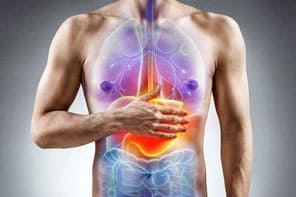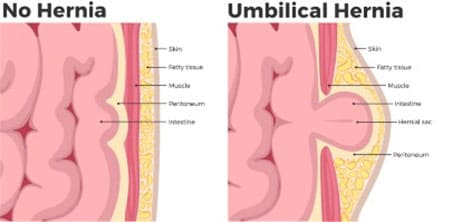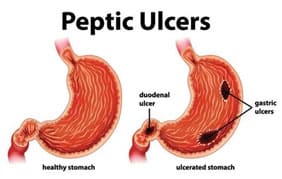Belly Button Pain
10
July
2021

When people feel pain around their stomach area, they get confused about the actual location and reason of the pain; is it in the upper abdomen? Is it in the lower quadrant? Is it an infection? Is it gas? Among the reasons behind this pain is one condition which is not widely talked about and is called “periumbilical pain”. This pain is located around the belly button area on the lower abdomen. It is called ‘periumbilical’ as the belly button area is referred to as the umbilical region, and the belly button itself is called either the ‘navel’ or the ‘umbilicus’. It is difficult to detect if the pain is related to the umbilicus, as it may be mistaken with any other part of the stomach. However, there are many reasons which mean that the person is suffering from periumbilical pain, and it is a serious condition which should not be overlooked.
Let’s be more scientific.
What is the belly button?
As defined by Andrei (2021), “the belly button is typically the body’s first scar, caused by the detachment of the umbilical cord after birth.” It is not a biologically useful part of the human body; however, it is the center which makes it easier to divide the abdomen. Mainly, the belly button is most important in childbirth procedures. The shape of the belly button is considered important in the identification of any abnormality or issue in the human body.
The belly button is connected to many organs in the lower abdomen area, so any pain felt in those organs might lead to periumbilical pain. These organs are:
-
The cecum
The appendix
The ovaries and fallopian tubes
The right ureter
The colon
Belly button pain is not a widely common condition; therefore, when a certain pain is felt, in any of the previously mentioned areas, the patient should get tested to identify the cause and then receive the right treatment.
Causes of belly button pain
As periumbilical pain isn’t a disorder itself, many underlying causes lead to it. The pain felt around the area may vary depending on the cause and the situation. Here are some of the most known causes for belly button pain.
-
Dyspepsia
Dyspepsia is the more medical term for indigestion. When the person suffers from indigestion, their stomach is constantly upset, which causes sensations of pain, discomfort, burning, and pain. This condition begins in the upper abdomen, and later on radiates to the area of the belly button. It is one of the most common causes for periumbilical pain, as 1 in every 4 Americans suffer from indigestion, according to the National Institute of Diabetes and Digestive and Kidney Diseases (Medical News Today, 2020).

-
Gastroenteritis
When the digestive tract gets inflamed, then the person is definitely suffering from gastroenteritis. People refer to this condition as the “stomach flu”, and it is widely common and affects a lot of people due to many reasons, such as a viral infection, or bacteria from the consumption of contaminated food. Not only does it cause pain to the entire stomach area, but it also leads to vomiting, nausea, cramping, excessive sweating, and more (Healthline, 2016).
-
Appendicitis
As the appendix is located next to the belly button area, any infection or disease that might affect it will lead to sharp pain in the belly button. The infection mainly begins in the belly button, then travels to the right stomach area. The reason for that is that the appendix and the thin membrane above the abdominal organs get inflamed, which is detected by the brain as a referred pain in the belly button area (Gambrah-Lyles, 2020). It is important to note that this pain doesn’t go away without a medical intervention. Therefore, if the patient felt any unusual symptoms for a long period of time, such as bloating, nausea, vomiting, and loss of appetite, they should immediately consult a health care professional.
Umbilical Hernia:
A common and harmless condition, an umbilical hernia occurs in infants more than adults. It is a condition in which a part of the intestine is pushed out of the human body through a cavity around the belly button. It usually causes a bump on the stomach.
The pain felt is severe and it is mainly located around the belly button area. This condition cannot be treated through medications; the patient should immediately undergo surgery.

Acute Pancreatitis When the pancreas is inflamed, it could directly lead to abdominal, and more specifically periumbilical pain. This condition can be a result of many other underlying causes, such as gallstones, infections, or excessive alcohol intake. Pancreatitis should be surgically solved, otherwise it will cause more serious damage to the entire abdominal area.
Ulcer: A peptic ulcer, which is formed in the lining of the stomach or on the duodenum, can cause severe stomachache, which leads to belly button pain. It is characterized by a sensation of burning around the belly button, leading up to the breastbone. It also causes bloating, nausea, excessive burping, loss of appetite, and stomach cramps.

Pregnancy: During pregnancy, women feel pain in their round ligament, which is close to the belly button. It happens most commonly during the second trimester, when the woman coughs, laughs, or makes sudden and fast movements. It’s important to note that this pain is very normal during pregnancy, and it isn’t a cause for concern.
Many more causes might lead to periumbilical pain such as gallbladder infection (cholecystitis), intestinal inflammation (diverticulitis), and gastrointestinal infections (Gambrah-Lyles, 2020).
How can periumbilical pain be diagnosed?
A thorough examination of the belly button is done, as a simple look from the doctor can determine if there’s a serious issue. If the belly button is ejecting discharge, caused by an infection, the doctor might take a sample of the discharge, then send it to the laboratory for testing.

If another condition is causing the pain, then the diagnosis will be dependent on the underlying cause. After studying the medical history of the patient, the symptoms of their pain, and the physical examination, the health care professional might suggest the following diagnostic tests:
-
A blood test to check if blood cells are within the normal range.
-
Urinal analysis to check for infections.
Imagine tests (CT scans and X-rays) to check the organs and their health.
Endoscopy to check for ulcers.
What are the treatment options?
As causes for periumbilical pain vary, treatment options are also diversified.
In case of infectious causes, antibiotics are prescribed to fight away bacteria and heal the body from their impact.
In case of inflammation, anti-inflammatory drugs and steroid creams are prescribed to cure autoimmune diseases, such as inflammatory bowel disease.
In case of obstructive and digestive causes, bowel rest is recommended, along with following a strict diet.
In case of more advanced conditions, such as a hernia and appendicitis, surgery is recommended.
How can periumbilical pain be prevented?

Keeping the belly button healthy and clean is crucial to prevent infections. Here are a few tips to how one can maintain their belly button hygiene:
Wash the belly button daily and use saltwater to keep it sanitized.
Use a cloth or sponge to clean the inside of the belly button.
Avoid wearing tight clothing which might irritate the belly button.
Don’t use any creams inside the belly button, as they might clog it, which promotes bacterial infections.
Dry the inside of the belly button completely after showering (Healthline, 2020).
Facts about belly button pain
Any surgical procedure done in the abdominal area might cause serious belly button pain.
Constipation is one of the main causes for belly button pain, but it is not widely mentioned as it is easily solved in most cases.
There are two forms of belly buttons: the “innie” and the “outie”, but most belly buttons are innies. Pregnancy changes the belly button from an “innie” to an “outie”. Based on reports done by Cleveland Clinic, when the woman’s abdomen expands during pregnancy, belly buttons who have a more inside shape pop out (Erikson, 2020).
The belly button is one of the organs which house a lot of bacteria. “A 2012 research review showed that your belly button may be home to 67 bacteria types.” (Healthline, 2021
There’s a surgical procedure called “umbilicoplasty”, which is mainly a plastic surgery for belly buttons. A lot of people like to undergo this surgery as they care about the appearance of their belly buttons.

References
Andrei, Mihai. “What is the belly button, does it serve any purpose, and why is it an “innie” or
an “outie”.” ZME Science. 28 January 2021. Retrieved from
https://www.zmescience.com/other/feature-post
Gambrah-Lyles, Claudia. “Pain Around the Belly Button”. Buoy Health. 17 October 2020.
Retrieved from
https://www.buoyhealth.com/learn/pain-around-belly-button
“Umbilical Hernia”. Mayo Clinic. 27 May 2020. Retrieved from
https://www.mayoclinic.org/diseases-conditions/umbilical-hernia/symptoms-causes/syc-
20378685
Erikson, Alexa. “10 Things you Never Knew about your Belly Button”. The Healthy. 4 August
2020. Retrieved from
https://www.thehealthy.com/beauty/face-body-care/things-you-
didnt-know-belly-button/
“Common Causes for Belly Button Pain”. Medical News Today. 15 January 2020. Retrieved
from
https://www.medicalnewstoday.com/articles/319931
“Belly Button Pain”. Healthline. 17 September 2018. Retrieved from
https://www.healthline.com/health/belly-button-pain
“Periumbilical Pain”. Healthline. 16 April 2019. Retrieved from https://www.healthline.com/health/periumbilical-pain
If you or anyone you know is suffering from pain, call us today on (469) 562 4188 to book an appointment with our expert doctors.